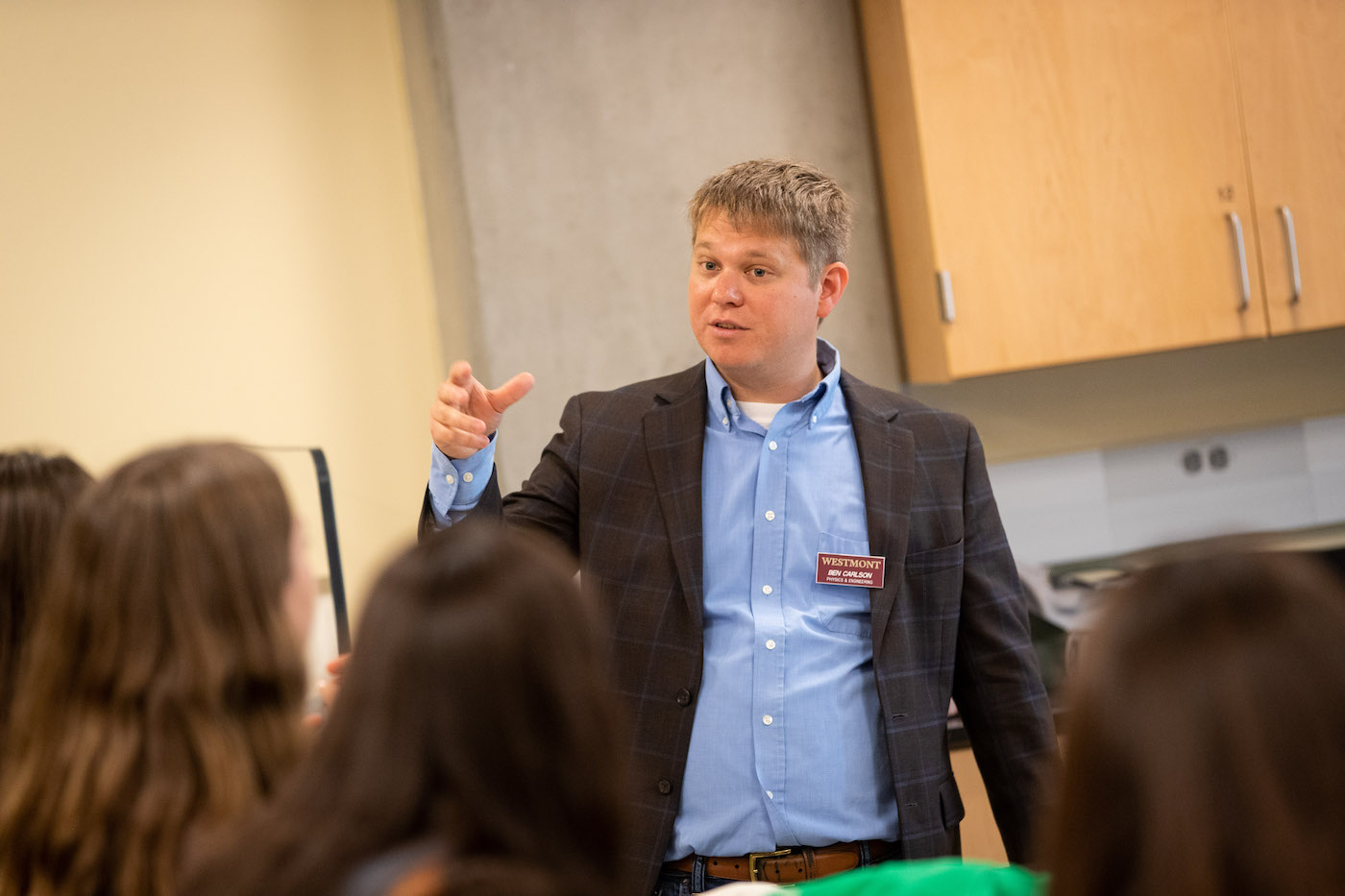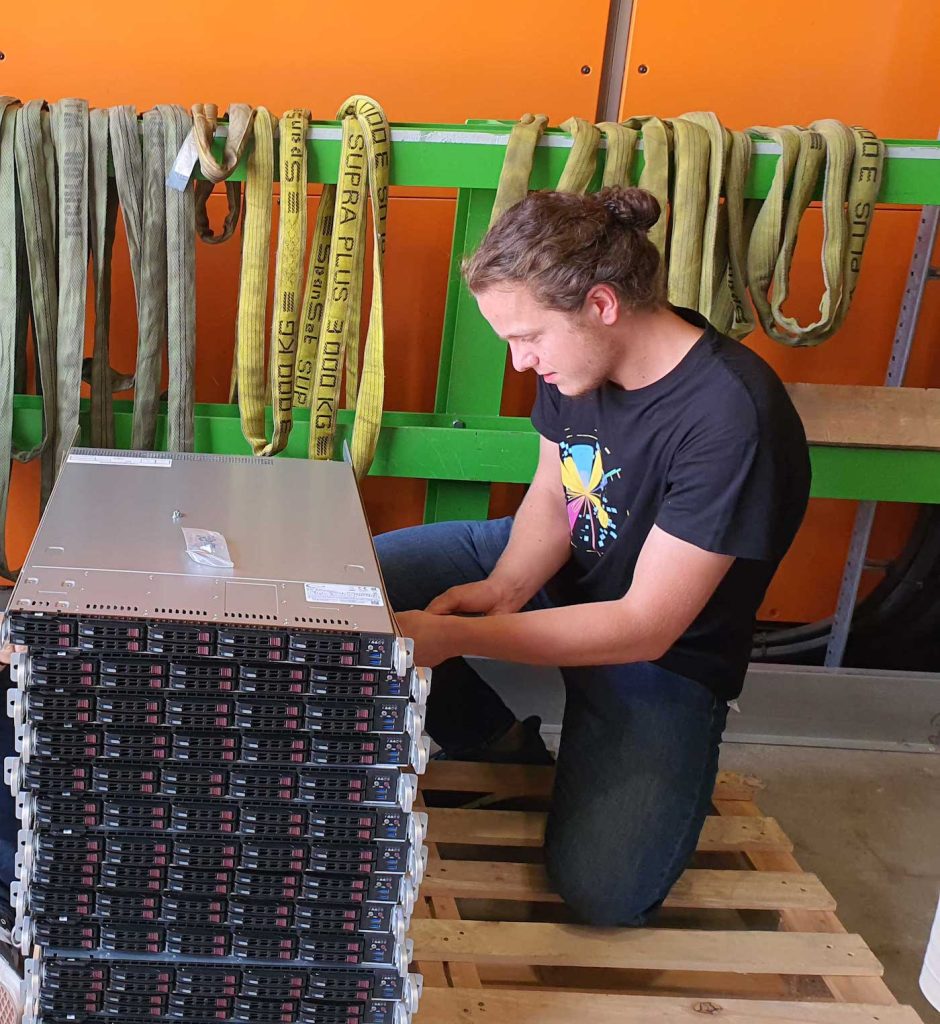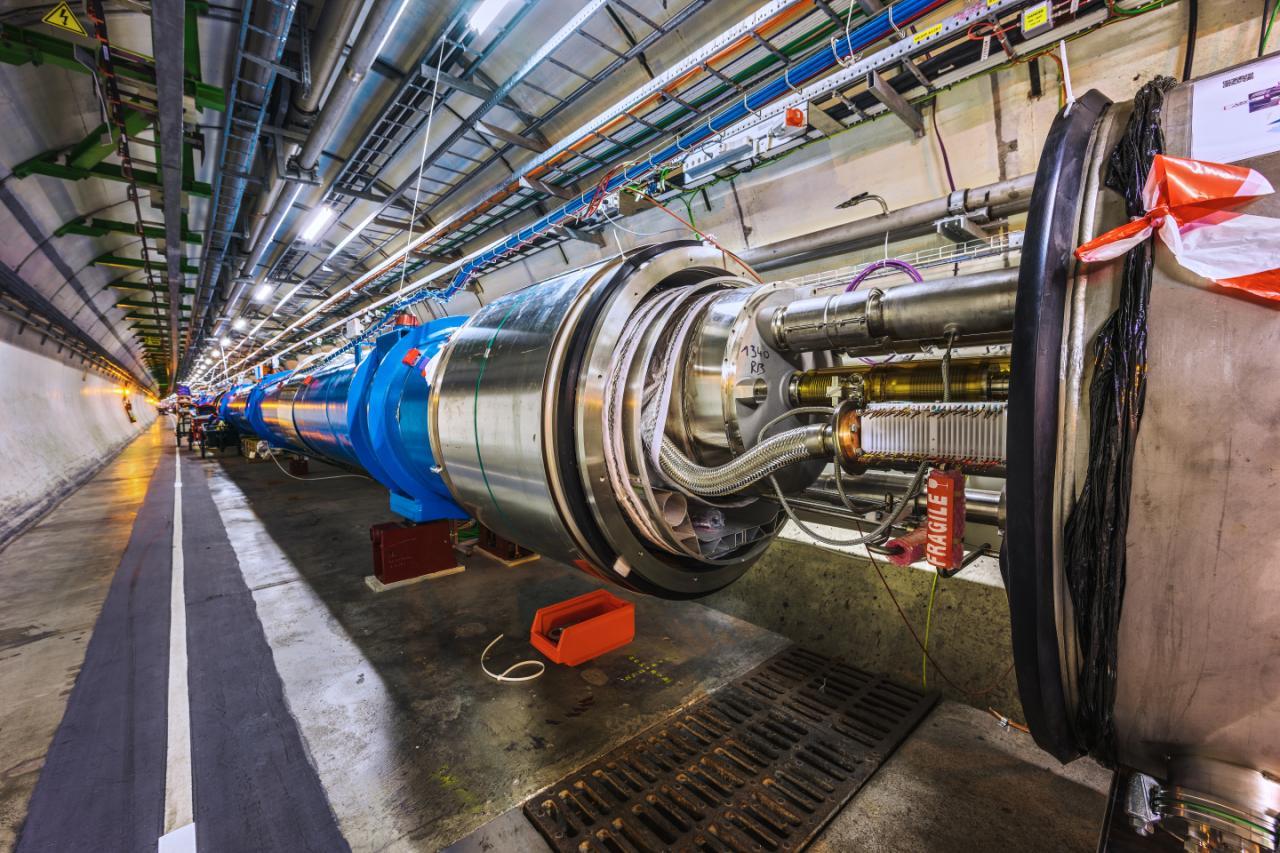Grant Expands Search for Dark Matter

A Westmont researcher has won a grant to further his search for evidence of the presence of mysterious dark matter. The National Science Foundation (NSF) has awarded a $200,000 grant to Ben Carlson, Westmont assistant professor of physics, to continue his work on the ATLAS experiment at the Large Hadron Collider (LHC) at CERN, a particle physics laboratory in Geneva, Switzerland.
In the next step for his research, “Casting Light on a Semi-Visible Higgs Boson with Novel Triggers at ATLAS,” Carlson seeks evidence for physics Beyond the Standard Model (BSM), which might account for the presence of dark matter. Researchers say dark matter, which doesn’t appear to interact with the electromagnetic field, may account for about 85 percent of material in the universe. It’s extremely difficult to detect because it does not absorb, reflect, or emit electromagnetic radiation including light.
Funds from NSF and other agencies around the world built the LHC machine and ATLAS, a large particle detector facility, as basic science tools. “The 2012 discovery at the LHC of a Higgs boson with mass close to 125 GeV, about the mass of a tungsten atom, represents both the crowning achievement of the Standard Model of particle physics and a hint beyond it,” Carlson says. “How can a light Higgs boson possibly survive huge, destabilizing quantum effects without new, undiscovered physics?”
The LHC recently started its third operational round at higher energy and increased event samples. Carlson says it’s possible that evidence for BSM physics could emerge in the next few years.
The grant allows Westmont’s undergraduate students to participate in the analysis of the LHC data and explore new machine-learning techniques. Two Westmont students, Sean Ryan (’24) and Chandler Baker (’24), are working in Geneva on collecting data with the ATLAS detector as part of summer research that Carlson oversees.
The NSF, an independent federal agency with a budget of $8.8 billion in 2022, promotes the progress of science and keeps the United States at the leading edge of discovery.









You must be logged in to post a comment.